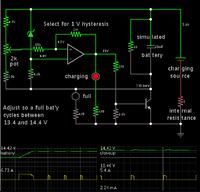smhn72@gmail.com
Member level 3

Salam to all
i want to know how a charge controller works and how this give cutoff to a battery when the battery becomes full???????
i want to know how a charge controller works and how this give cutoff to a battery when the battery becomes full???????




